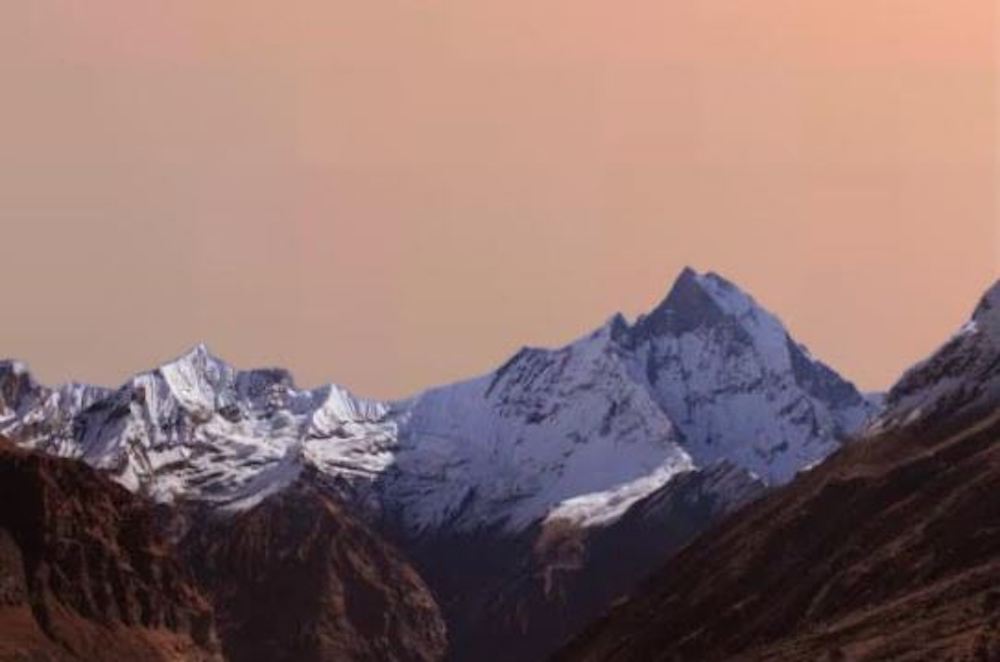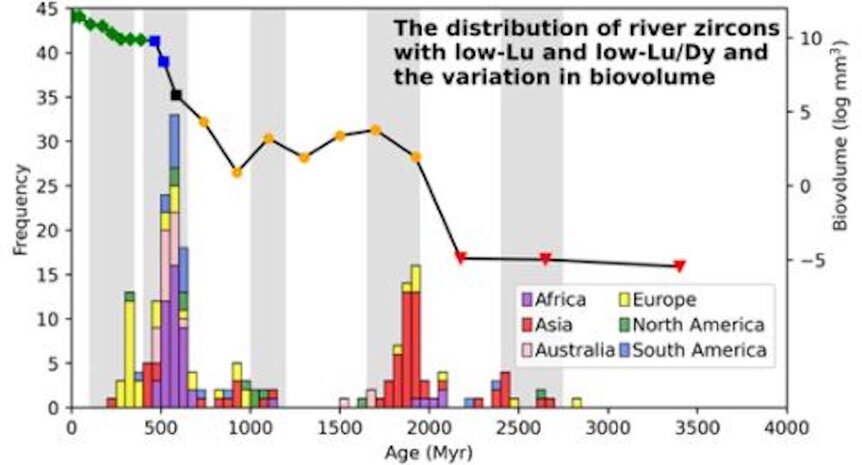Create a free profile to get unlimited access to exclusive videos, sweepstakes, and more!
When 'super mountains' crumble, evolution goes into overdrive
It turns out that fresh cracked mountain is the ultimate condiment.

High mountains aren’t often thought of as being the most hospitable to life, but new research suggests they might be a crucial ingredient for driving evolution toward complexity.
Ziyi Zhu and Ian Campbell, scientists from the Research School of Earth Sciences at the Australian National University, and colleagues, identified the existence of vast ranges of supermountains at least twice in Earth’s past, correlating with an increase in atmospheric oxygen and paradigm shifts in evolution. Their findings were published in the journal Earth and Planetary Science Letters.
Finding evidence of ancient mountains requires knowing what to look for. Erosion and plate tectonics conspire to erase surface records of the deep past, but you can’t be as large as the Himalayas, or larger, without leaving a signal behind. When rocks come together under pressure they form zircons, crystalline structures, which vary based on the conditions of their formation. The nature of these crystals can tell us something about how they were constructed. Most common zircons have a high lutecium content, but that isn’t the case in the presence of large mountains when pressures are high.
“At high pressure, garnet forms,” Campbell told SYFY WIRE. “Garnet takes the lutecium away from the zircon and you wind up with low-lutecium zircons which can only form in the roots of very high mountains.”
Even as erosion destroys ancient mountain ranges, the roots of those mountains are left behind and scientists can find these low-lutecium zircons which are left behind like a fingerprint. Dating these structures tells us there were at least two supermountain ranges in Earth’s past.
The first of these occurred between 1.8 and 2 billion years ago, during the formation of the Nuna supercontinent, and stretched across approximately 8,000 kilometers of the Earth. The second emerged between 500 and 650 million years ago along the Gondwana supercontinent. It was, likewise, 8,000 kilometers long and roughly 1,000 kilometers wide. Precisely how tall they were is not yet clear, but it’s believed they would have rivaled the Himalayas.
“The Himalayas are the height they are because they collapse under their own weight. These supermountains were probably the height of the Himalayas, perhaps a shade higher, but they couldn’t have been much higher. What’s more important is how extensive they were,” Campbell said.
While the existence of incredibly long, wide, and tall mountain ranges is geologically exciting, things get really interesting as those mountains begin to crumble. As erosion occurs, nutrients formed inside the mountains are liberated and delivered to the world’s oceans. Specifically, phosphorous primarily comes from erosion events and has a key role in the development of life.
“There is almost no atmospheric phosphorous,” Zhu told SYFY WIRE. “When erosion happens, phosphorous enters the ocean where it’s utilized by organisms like algae and cyanobacteria. These nutrients feed oxygen-producing plants. If there’s more food, they grow more and produce more oxygen.”
Through this process, the production and subsequent destruction of large mountain ranges indirectly results in increased production of oxygen. While there is some question about the emergence and evolution of life prior to the Cambrian, when organisms started making hard shells, the timing of these mountain ranges bumps up nicely against a couple of big paradigm shifts in evolution.
The Nuna supermountains occurred right around a time when eukaryotes might have emerged. Zhu and Campbell were careful to leave a caveat here that it’s possible they emerged earlier, and we simply don’t have a strong record of them. The case for the impact of the Gondwana supermountains is stronger.
“We know the appearance of the Gondwana supermountains corresponds with the first appearance of animals and the explosion of animals at about 530 million years ago. And the most likely timing for the formation of eukaryotes is that they formed at about the time of the Nuna range,” Campbell said.
It appears that complex life requires these large influxes of nutrients in order to emerge, and the erosion of mountains is a good way to make that happen. So, the next time you’re mad that you’re an evolved ape who has to pay taxes for some reason, don’t blame your ancestors. Direct your anger where it rightly belongs, at a mountain.



























